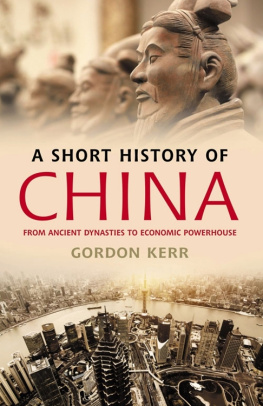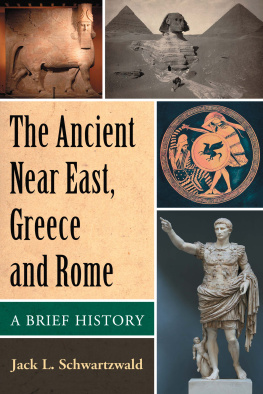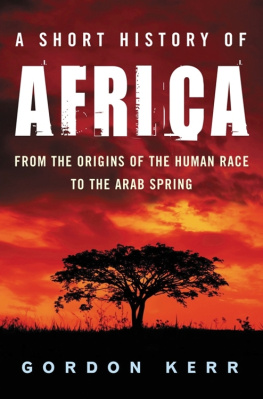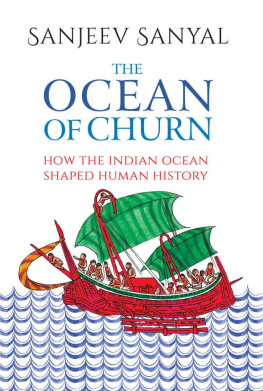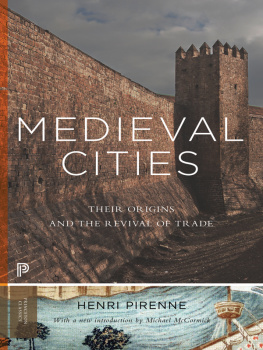Africa. The cradle of civilisation. From the dawn of human time in prehistoric Africa right through to the so-called Arab Spring of 2011, Gordon Kerr offers a comprehensive introduction to the sprawling history of this enormous continent.
He begins with the origins of the human race and the development of stone age technology, through ancient and medieval times and the significance of the Arab presence, the Muslim states and the trans-Saharan trade.
Kerr continues with the rise and fall of nation states and kingdoms prior to the arrival of Europeans , Ghana, the Kingdoms of the Forest and Savanna, Yoruba, Oyo, Benin, Asante, Luba, Lunda, Lozi and many others, on to the beginning of the slave trade, and the European conquest and colonization of sub-Saharan Africa, the Scramble for Africa.
Finally moving onto the often bitter struggles for independence from that period of colonization and exploitation, Kerr concludes with an assessment of Africa in the 21st century.
About the Author
Gordon Kerr is a writer and editor who has worked in bookselling, publishing, journalism and the wine trade. He is the author of several titles including A Short History of Europe published by Pocket Essentials.

www.pocketessentials.com
Contents
Introduction
Africa presents the historian with many interesting challenges. Not the least of them is its sheer size. The worlds second-largest continent, at around 11.7 million square miles, it covers more than 20 per cent of the earths total land area. With fifty four recognised sovereign states, bordered by the Mediterranean in the north, the Atlantic in the west and the Indian Ocean, and the Arabian and Red Seas in the east, it offers a sometimes confusing abundance of different peoples, ethnicities, societies and religions. Its geography, too, is diverse but, without understanding Africas geography, one cannot possibly understand its history. Divided by the equator, forty per cent of its landmass is desert with the Sahara Desert its largest, stretching across North Africa, through a dozen countries, and spanning almost 3.5 million square miles.
We have a perception probably derived from films and literature of an Africa that is covered by dense forest, but impenetrable tropical rainforest takes up only eight per cent of the continent. The remainder is comprised of Sahel a thousand mile-wide, coast-to-coast buffer zone between the desert in the north and the savannah and wooded grasslands of the south. Numerous mountain ranges reach up into Africas skies, from the Atlas range in the north, which extends across Morocco, Algeria and Tunisia, to the Drakensberg range in southern Africa. Its rivers cut dramatic gorges and plummet over spectacular waterfalls such as Victoria Falls (known to Africans as Mosi-oa-Tunya), while its beautiful lakes ripple into the distance. The biggest, Lake Victoria Nyanza, which borders Uganda, Kenya and Tanzania, is the second-largest lake in the world at 26,560 square miles.
Making sense of such social and geographical diversity is not helped by the lack of written resources. But, of course, although African societies of the past were non-literate, that does not render their history any less fascinating than the well-chronicled histories of the nations of the western world. And thanks to anthropologists, archaeologists and linguists, we have uncovered the stories of Africas past, the movements of its peoples, its empires, its kingdoms and its great men and women.
In 1871, when Charles Darwin suggested in The Descent of Man, that the birthplace of mankind was, in all likelihood, located in Africa, Europeans were horrified. It was not just that he was overturning the Biblical notion that in seven days God had created the earth and all the creatures that inhabited it although that, in itself, proved controversial enough it was also the fact that he was going against the presumption that Europeans were superior to the worlds other races and promoting the idea absurd to Victorian ears that their progenitors were Africans. Research in the twentieth century and from the 1950s onwards in particular, has, however, provided ample evidence to support Darwins claim that Africa is, indeed, the cradle of humankind.
But, despite its auspicious beginnings, Africa has, for too long, been no more than a warehouse for the rest of the world, a source of free labour and precious minerals and there is a danger that it will continue to be so, as the worlds great powers vie for the riches that lie beneath African soil in a new scramble for Africa. One can only hope that this will not come to pass and that this vibrant, exciting continent will continue to enhance the world with its people, its beauty and its colourful history.
Prehistoric Africa
In 1924, in a limestone cave near Taung, in South Africas Cape Province, anthropologist Raymond Dart discovered the skull of a six-year-old creature which he named Australopithecus (southern ape). Although ape-like, Australopithecus exhibited human characteristics and had walked upright on two legs with a slight stoop. It was small, only about 1.25 metres tall and would have weighed around twenty five kilos. Its teeth, approximating those of a human, had adapted to eating meat as well as vegetables. Critically, however, the brain of Australopithecus would have been substantially larger than that of an ape. Emerging around four million years ago, Australopithecus became extinct two million years later.
The brain capacity of Australopithecus was somewhere between 440 and 500cc but hominid skulls discovered in the Olduvai Gorge and near Lake Turkana in Kenyas Great Rift Valley exhibit brain capacities of between 650 and 800cc. With this creature, known as Homo habilis (handy man), who lived 2.3 to 1.4 million years ago at the beginning of the Pleistocene period, were found simple stone tools. Homo habilis was followed by Homo erectus who fashioned the hand axe, a stone implement with more regular and consistent flaking on each face than had been hitherto produced. By around 40,000 BC, the next version of the Homo genus, Homo sapiens, had evolved into Homo sapiens sapiens, modern humans, with a brain capacity of about 1,400cc. Within 30,000 years, this version had spread from its African origins and colonised the world.
It was the manufacture of stone tools that set the Homo line apart from other animals. This took place during the era known as the Stone Age, the prehistoric period lasting about two and a half million years immediately preceding the discovery of metals around 6,000 years ago. Stone implements with sharp, pointed or percussive surfaces were manufactured. It was with the arrival of Homo erectus, around one and a half million years ago, that a dramatic technological advance was made. The hand axe, usually known as Acheulian, from Saint-Acheul, the location in southern France where it was first discovered, was the first tool to be crafted to a pre-determined shape. These people were also the first to use fire for cooking as well as for warmth.
The Middle Stone Age, dating from about 150,000 years ago, brought the emergence of Homo sapiens. Bone began to be used and stone tools grew ever more sophisticated. During the second phase of the Middle Stone Age, stone pieces began to be fitted onto a length of wood or other material. Around this time, climatic changes affected food supply and it is possible that an increased population led to people seeking better ways to exploit their environment. This led in turn to regional specialisation. The peoples of the more sparsely wooded areas of the savannah hunted game with spears whilst the inhabitants of the wetter and more thickly forested regions lived by collecting fruit and vegetables as well as by fishing.
Next page





